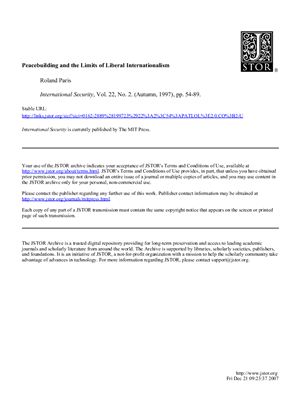O n e of the challenges
facing the inteational community in the post-Cold War era is the increasingly
pervasive problem of civil conflict.' Indeed, all of the thirty major armed
conflicts fought in the world in 1995 were intrastate wars.' Devising ways of
responding to this violence has been a topic of considerable debate among
policymakers and students of conflict management in recent years.3 But no less
important is the task of determining what to do once the fighting stops.
facing the inteational community in the post-Cold War era is the increasingly
pervasive problem of civil conflict.' Indeed, all of the thirty major armed
conflicts fought in the world in 1995 were intrastate wars.' Devising ways of
responding to this violence has been a topic of considerable debate among
policymakers and students of conflict management in recent years.3 But no less
important is the task of determining what to do once the fighting stops.

